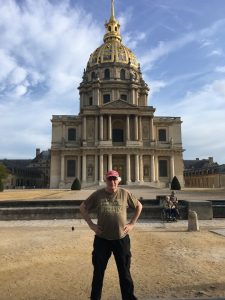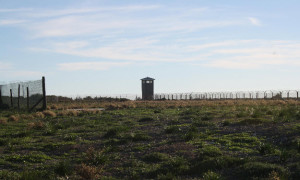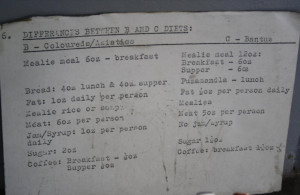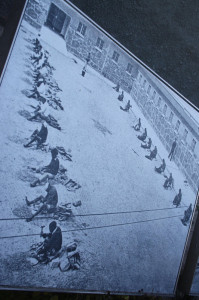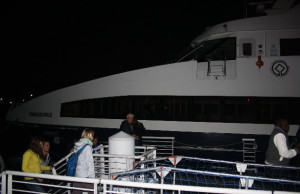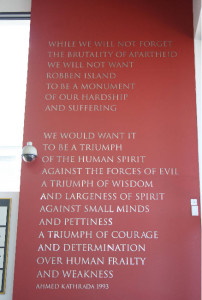Tag Archive
activity architecture art artist building Canada children city CostSaver downtown drive i-95 entertainment Europe event exhibit family festival Florida food fun historic History landmark local Museum music Nature New Zealand Ontario roadtrip sculpture Seattle show sights sightseeing tour tourist Trafalgar travel travelblogger view Washington Washington State water world
France, Paris: Hotel des Invalides
.
Les Invalides or Hôtel des Invalides is a vast complex of buildings in Paris including museums and monuments relating to the military history of France. As per its name it was originally built by Louis XIV as a hospital and a retirement home for war veterans. Pictured here is the Dôme des Invalides, a large church, the tallest in Paris which contains the tombs of some of France’s war heroes, most notably Napoleon.
The complex had 15 courtyards for military parades. At the church, attendance was mandatory. Louis XIV also commissioned his architect Mansart to construct a separate royal chapel referred to as the Église du Dôme from its most striking feature (pictured). By combining a royal chapel with a veterans’ chapel, the King and his soldiers could attend mass at the same time while entering the place of worship though different entrances, as prescribed by court etiquette at that time.
I’d like to think the gentleman sitting there (in the wheelchair and on the bench) are two of our veteran heros..
US: Daytona Beach, FL- The Latest LED Technology and Digital Animations at Magic of Lights® Holiday Display
During this year’s holiday season, families will be able to enjoy a festive drive through experience at Daytona International Speedway. The “World Center of Racing” will be transformed with hundreds of light displays into a holiday spectacle, a 1.5 mile long Magic of Lights, using the latest in LED and digital animation technologies specifically designed for this iconic venue.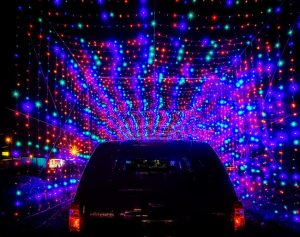
Experience the holiday spirit drive-through from the comfort of your own car. At every turn, and in every direction, the magical route is overflowing with spectacular light displays and animations. Be transfixed when Santa’s team of reindeer cross in flight above your vehicle, see the sweetest 200-foot long Candy Cane Lane, a delightful Snowflake Forest and even more festivities.
Magic of Lights is a fun and memorable family entertainment. To commemorate the season of giving a portion of every ticket to Magic of Lights benefits the Florida Hospital Foundation.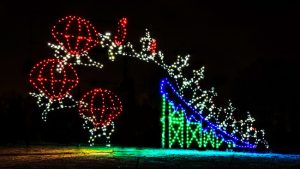
Location: Daytona International Speedway, 1801 West International Speedway Blvd, Daytona Beach, FL 32114
Dates: until Dec 31st, 2018
Hours: every night from dusk – 10 pm
Tel: 330-441-4255
magicoflights.com/daytona
For Regional Accommodations, Restaurants & Attractions: daytonabeach.com
US: Hampton Beach, NH – Inspirational Kite Fly to Support Cancer Care
elebrate the 10th anniversary of Kites Against Cancer as the sky above Hampton Beach becomes filled with kites of all colors as friends and neighbors gather to honor and remember loved ones affected by cancer.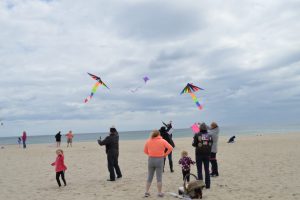
This inspirational family event kicks off with Zumba® at 11:00 a.m., followed by kite flying and decorating, face painting, raffles, refreshments, music and more.
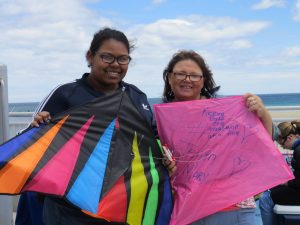 Special kites available the day of the event. Participants are encouraged to decorate or personalize their kites in memory or in honor of a loved one. Kites will fill the sky as a sign of hope and support for those affected by cancer. Event proceeds benefit programs and services at Exeter Hospital’s Center for Cancer Care.
Special kites available the day of the event. Participants are encouraged to decorate or personalize their kites in memory or in honor of a loved one. Kites will fill the sky as a sign of hope and support for those affected by cancer. Event proceeds benefit programs and services at Exeter Hospital’s Center for Cancer Care.
Unable to attend? Show your support with a virtual kite and still be part of this special event. With your $10 donation towards a virtual kite, your loved one will be honored and remembered. Their name will be added to a large kite, which will be flown during the event. Click here to purchase a virtual kite. 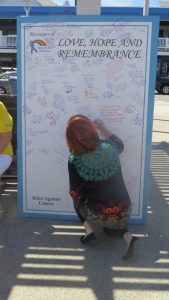
Location: Hampton Beach (at the Oceanfront Pavilion), Hampton, NH 03842
Date: Sun, May 20, 2018
Time: 11-3pm
Tel: 603-580-6668
unitedinwellness.org/events/kites-against-cancer/
For Regional Accommodations, Restaurants & Attractions: portsmouthnh.com
US: Daytona Beach, FL – New 1.5-mile Digital Animation Magic of Lights at Daytona International Speedway
During this year’s holiday season, families will be able to enjoy a festive drive through experience at Daytona International Speedway. The “World Center of Racing” will be transformed with hundreds of light displays into a holiday spectacle, an all new 1.5 mile long Magic of Lights, using the latest in LED and digital animation technologies specifically designed for this iconic venue.
Experience the holiday spirit at The Magic of Lights™ running every day through the holidays from dusk to 10 p.m. The experience will include a drive behind the Ticket and Tours Building, through the world’s only motor sports stadium and conclude in the Midway display area outside the facility.
For a fun and memorable family entertainment, head to the Daytona International Speedway. To commemorate the season of giving a portion of every ticket to Magic of Lights benefits the Florida Hospital Foundation.
Location: Daytona International Speedway, 1801 West International Speedway Blvd, Daytona Beach, FL 32114
Dates: until Dec 31st, 2017
Hours: every night from 5 – 10 pm
Tel: 330-441-4255
magicoflights.com/daytona
For Regional Accommodations, Restaurants & Attractions: daytonabeach.com
South Africa: Visiting Robben Island, UNESCO World Heritage Site
By Adele Shapiro – March 2012.
As a child I used to visit Robben Island with my grandmother. Her son, my uncle, was a warder in the prison services there. The name “Robben”, despite sounding very English – is in fact the Dutch for “Seal” – and the name derives from the extensive seal colony that was found on the Island by the first Dutch settlers.
We would go to the Cape Town docks and from there, take a boat ride to the island, where we would spend the day with family. I was vaguely aware that there were bad people on the island, and that it was a prison…. but little did I know then of the role it was to play in South Africa’s later history. Years passed and now as an ad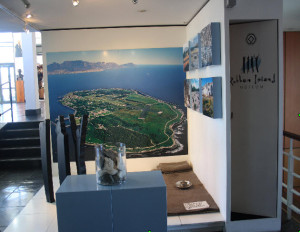 ult, I found myself revisiting the place where “the bad people” were kept, only now I realized that some were not so bad after all.
ult, I found myself revisiting the place where “the bad people” were kept, only now I realized that some were not so bad after all.
I bought a ticket for the tour some days before the trip, (advisable, as they fill up quickly) and took time out to examine the display at the Nelson Mandela Gateway at the V&A Waterfront in Cape Town.
There were many photographs of the political dissidents, the calls for boycotts, the anti-apartheid marches and there was also a prison cell that had been reconstructed for the purposes of the exhibit. I strongly recommend a visit to this exhibit before going to the island as it helps to contextualize the experience.
The trip began, as in times of old, with a boat ride from Cape Town docks, but this time instead of my uncle meeting us, we had a pleasant tour guide who told us jokes on our bus trip, whilst pointing out various sights on the island. Our bus was parked under a sign that said: “Welcome. We serve with pride.” I wondered if that sign had been there when Robben Island had been a prison as it was so sharply incongruous to the environment. I hoped not.
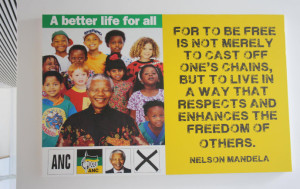 Robben Island has had a long history. First as a lighthouse to warn ships of the VOC, the Dutch East India Company (Verenigde Oostindische Compagnie), of the rocks that surround the island. But since the end of the 17th century, Robben Island has been used for the isolation of (mainly) political prisoners. The island was also used at various times as an animal quarantine station, a home for slaves, a leper colony, a hospital for the mentally ill and as a prison for French Vichy prisoners of war.
Robben Island has had a long history. First as a lighthouse to warn ships of the VOC, the Dutch East India Company (Verenigde Oostindische Compagnie), of the rocks that surround the island. But since the end of the 17th century, Robben Island has been used for the isolation of (mainly) political prisoners. The island was also used at various times as an animal quarantine station, a home for slaves, a leper colony, a hospital for the mentally ill and as a prison for French Vichy prisoners of war.
First we saw the Leper Graveyard and then house where Robert Sobukwe (Founder of the Pan Africanist Congress) had been kept separate from the other political dissidents.
It seems that Robert Sobukwe had special status in the prison. He was kept in solitary confinement at all times, but allowed certain privileges including access to books, being permitted to study, being permitted to wear civilian clothes, and being permitted bread. His children were allowed to visit him and they had their own bedroom in his “house”. Robert Sobukwe was convicted of incitement for demonstrating against and defying the Pass Laws, and in particular, for his connection to the PAC demonstration (although he was not present) which became known as the Sharpeville Massacre.
The notorious Pass Laws required black people to carry a pass book at all times when outside their compounds or designated areas, and were designed to limit severely the movements of the non-white population. This legislation was one of the dominant features of the country’s apartheid system.
Sobukwe was sentenced to three years in prison. After serving his sentence, he was moved to Robben Island for internment, as a new law called the General Law Amendment Act had been passed, which permitted his imprisonment to be renewed annually at the discretion of the Minister of Justice. This procedure became known as the “Sobukwe clause” and Robert Sobukwe was the only person whose imprisonment was extended under this clause. Imagine how special one has to be in order for parliament to pass a law just for you!
We also learned from our tour guide that the American politician and Pastor, Andrew Young, had fostered Sobukwe’s children in the USA, while Sobukwe had been in prison.
Our tour continued to the lime quarry where the political prisoners had worked. At the entrance to the quarry we saw a small cairn, and learned its history. In February 1995, (the landmark change of government was in 1994), about one thousand former political prisoners gathered again on Robben Island, but this time as free men, and to mark the occasion, each one placed a small stone from the quarry in a pile, making a small memorial to their years of hardship and struggle.
As we continued on our bus ride, we were shown a church, a hospital, a school and a mosque, and realized that far beyond our expectations, the island had supported a whole community. We duly arrived at the prison and tumbled out of the bus for our tour of “the real thing”. We were excited and filled with high spirits and I wondered for a moment where my heart would have been had I not been a tourist.
Inside we found grey walls. It was cool at midday; it was clear that at midnight it would be very cold. The communal cells were large and each had a bathroom attached.
Here we met our prison tour guide, Derrick Basson, a former political prisoner who served time on Robben Island for sabotage.
Derrick was very patient, humble and remarkably, not bitter. He answered all the insensitive questions calmly and without anger. In addition he explained the grading of the prisoners by race and also the diets that varied due to the racial classification of each prisoner. One of the curious facts he told us was that black prisoners were not given bread. As they were Africans their “natural” food was considered to be maize meal. The mixed race prisoners were allowed bread as they were considered to be more western or European and less African. The black Africans were also not allowed jam or syrup. I suppose you do not need jam if you have no bread.
Then I remembered that Robert Sobukwe, in spite of being black, was allowed to have bread, and it struck me that this must have been because he had been a university professor, and since this is a very “European” and non-tribal job, maybe he was considered eligible to receive bread.
Derrick further explained how prisoners slept on mats on the floor and how 5 blankets had not been enough to keep them warm at night. I suddenly remembered an interview with a former Alcatraz inmate who spoke of the extreme cold and of how prisoners had learned to sleep with only their elbows and knees touching the floor, hands locked behind the head. I became very grateful for my duvet.
We were told that in the beginning the political prisoners had been kept with the ordinary criminals, but later on, they were, thankfully, given their own “wing” and kept together. They came to call this place “The University” as they learned many things from each other and many of them also obtained degrees while in prison.
Derrick then took us to a yard where the prisoners had chopped rocks and turned them into stones, day after day in the sun. They were told that these rocks were used for roads built on the island, but no one seemed to know if this was true or not.
We were then taken to Nelson Mandela’s cell. Mandela was a militant anti-apartheid activist, as well as the co-founder and leader of the armed wing of the African National Congress (ANC), Umkhonto we Sizwe or “Spear of the Nation”. He was arrested in 1962 and convicted of sabotage, (amongst other charges), after he admitted to manufacturing explosives and acts of public violence, and was sentenced to life imprisonment. Mandela served 27 years in prison, 18 of these on Robben Island. After his release, he served as President of South Africa from 1994 to 1999.
My very first impression was of how small the cell was. No, not small, tiny. And then I thought that at least he could stand up and lie down in it, but not much more than that. At least it was larger than the dreadful box that I had heard was used in China. But there was no toilet. Just a metal bucket with a lid. At least a lid. And no tap, so no water. And if you are thirsty during the night, what should you do? And of course there was no electrical socket and no radio nor TV. And all I could think of was 27 years. TWENTY SEVEN YEARS! There was no door handle on the inside. The door was only operational from the outside, not unlike a cage. I remembered that Nelson Mandela had once remarked that the hardest and most traumatic experience he endured whilst on Robben Island for all those years was that he never ever saw, or even heard, a child. Can you imagine that? Now he insists on being photographed with children, whenever possible.
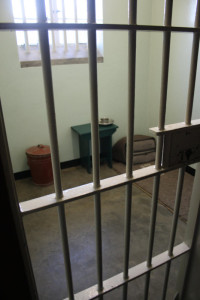 And then it was all over. We walked out to the yard, Derrick took us to the exit, and we said our goodbyes.I felt an odd mixture of elation and depression. Very happy that I had been to a UNESCO World Heritage Site of such importance, happier still that it was no longer a prison, and most happy that I was leaving. Yet also depressed and ashamed because of the suffering this place represented.
And then it was all over. We walked out to the yard, Derrick took us to the exit, and we said our goodbyes.I felt an odd mixture of elation and depression. Very happy that I had been to a UNESCO World Heritage Site of such importance, happier still that it was no longer a prison, and most happy that I was leaving. Yet also depressed and ashamed because of the suffering this place represented.
Duly subdued, we gratefully returned to our boat to ponder our feelings of inspiration and shock, enjoy the beautiful sunset cruise back to Cape Town, and watch a school of dolphins at play in the sea.
Remember when planning a visit to Robben Island, that the tours don’t always run on time. There was no snack bar on the boat. Our boat was 1 hour late in leaving Cape Town harbour and then we were rushed through our tour, which was a pity as there was too little time for questions.
A suggestion would be to make no appointments after the visit as the timing can vary, and also, take a snack pack. A sun hat and sun block are also good ideas.
Ferries depart (supposedly) at 9am, 11am, 1pm and 3pm, weather permitting, from Nelson Mandela Gateway, at the V&A Waterfront in Cape Town. Tickets costs are R230 for adults and R120 for children (U/18). Telephone: +27 (0)21 413 4200
Fax: +27 (0)21 419 1057
Canada Ottawa: Museum of History
The swooping architecture of the building and jaw-dropping 17 metre-high domed ceiling of Canada Hall are visions you will not easily forget after you have visited the newly named Canadian Museum of History (was Canadian Museum of Civilization), which covers Canadian life from AD 1000 to 2000.
From now until Sept 28, 2014, you can enjoy the informative exhibit about Snow and the ingenious ways in which Canadians have adapted to difficult winter conditions, from sleighs to snow removal. You can participate in a fun quiz at the end.
The museum is a playground for all, as the Children’s Museum takes the kids on travels around the world – including a passport to stamp in each country. All kinds of imaginative play from driving a bus, motorcycle, ship or camel to running a shop, putting on a puppet show, living in a pyramid, moving heavy boxes using a winch, or booking a trip can all be tried out.

In the main galleries, visitors see a Viking family arriving in Newfoundland around AD 1000, discover New France through a farmhouse, inn, hospital, shoemaker’s shop and visit a voyageur camp, a lumber camp, a Métis campsite, British military living quarters and a Maritime shipyard. There’s a stroll past shops along the main street of a small town in late 19th-century Ontario.
Learn about life in a turn-of-the-century prairie railway station and yard, a Saskatchewan grain elevator, an authentic Ukrainian church, a Chinese hand laundry and a 1920s Alberta oil derrick. You can even sit in Yellowknife’s Wildcat Cafe, the town’s first restaurant and a popular gathering spot for prospectors, bush pilots, miners and trappers.
If you love animals, leave time for the up close and personal movie, Kenya 3-D about a safari through Africa.
Location: 100 Laurier St., Gatineau, Quebec K1A 0M8
Phone: 819-776-7000 or 800-555-5621
www.civilization.ca
